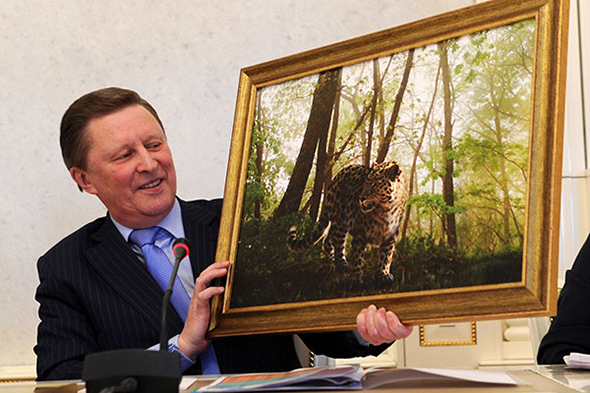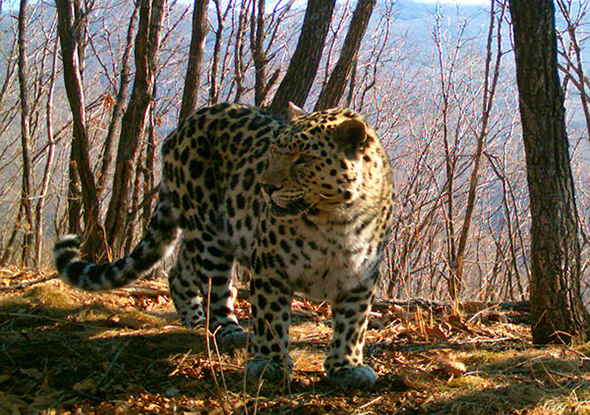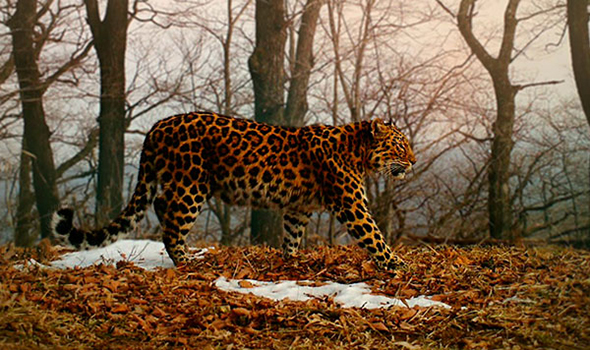Return of the leopard
The VTB United League is teaming up with the Far Eastern Leopards, a non-profit organization dedicated to protecting this beautiful rare leopard, to promote the Return of the Leopard campaign. The goal of the campaign is to help attract attention to the plight of the Far Eastern leopard, the world’s most endangered big cat.

These unique animals were close to extinction at the end of the 20th century. Only about 30 leopards were still living in the wild, clustered near the Russian border with China. Human activity was a big reason for the decline in the leopard population: deforestation and road construction ravaged their natural habitat. Poachers also posed a threat. However, the creation of a Leopard Land national park in Russia’s Primorye region thanks to the President of Russia’s protection of rare animals initiative helped to stabilize the population. By 2014, the number of leopards in the wild had reached 70.
The Return of the Leopard campaign is about more than just boosting the leopard population. It also symbolizes a shift in societal attitudes toward nature conservation and our shared responsibility to preserve the Primorye taiga’s unique ecosystem.
The clubs, players and coaches of the VTB United League share these values and actively support the mission of the Far Eastern Leopards organization and encourage fans around the league to join in the campaign.
Eight 2014-15 VTB United League playoff games will be played under the #returnoftheleopard hashtag. Players will wear special t-shirts during pregame warmups while fans will have an opportunity to learn more about the Far Eastern leopard and the work of the Far Eastern Leopards non-profit. There will also be fan contests (at games and via social media) and the league will introduce its new mascot: the energetic and fun-loving Leopard. Fans will even have a chance to win souvenirs with the leopard insignia.
In addition, the VTB United League and Far Eastern Leopards non-profit will launch a social media campaign name league’s new mascot using the hashtag #LEO29.

The leopard mascot has a real-life twin, an inhabitant of the Leopard Land wildlife park. He’s an athletic, confident five-year-old male tiger, known only by his “number” - LEO29M. Using the #LEO29 hashtag, fans will be able to suggest names for the young tiger on social media and vote for their favorite. The name that gets the most social media mentions will also be given to his twin, the new VTB United League mascot.
Info:
The Far Eastern leopard is the world’s most endangered big cat and the most northern subspecies, uniquely adapted to live in the taiga’s harsh conditions. The leopard is a hunting machine, capable of jumping 19 feet horizontally and 10 feet vertically while running at speeds of up to 37 mph. Also known as the Amur leopard, the big cat is also a cautious, curious and friendly animal. In fact, there’s never been a single recorded incident of a Far Eastern leopard attacking a human.
By the end of the 20th century, there were thought to be only 30-35 leopards left in the wild, making it the most endangered subspecies of big cat in the world. Human activity was primarily to blame for the animal’s catastrophic decline. According to experts, the leopard was expected to go extinct within 10-15 years. But that didn’t happen. Given high-priority status by the President of Russia’s protection of rare animals initiative, a special program was developed to save the Far Eastern leopard. The Leopard Land national park was established in the Primorye region and covered a large part of the animal’s historic habitat. Scientists were brought in to assist with the program, while security measures were also implemented to protect the leopards from poachers. Russia also implemented a cross-border agreement with China.

As of today, there are approximately 70 leopards in the wild, with at least 57 living in Russia. Though these are just the project’s first results, they provide cause for optimism: the risk of the Far Eastern leopard going extinct has been significantly reduced. The leopard is even returning to regions where it hasn’t been seen in decades.
LEO29M is a male Far Eastern leopard, which lives in the southern part of the Leopard Land national park. Judging by photos, he’s 5-6 years old, at the peak of his strength.
It’s evident from images that he’s in terrific physical condition and the master of his domain, though he does enjoy napping. Several pictures capture the young tiger lazily stretched out in the sun, confident enough to sleep out in the open. LEO29M trusts his instincts and has no fear of the competition













































